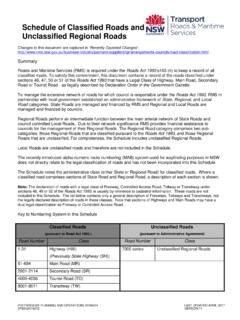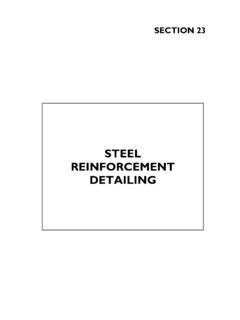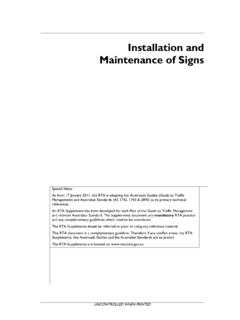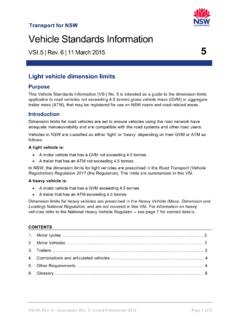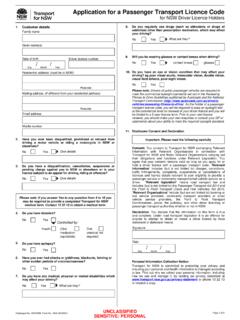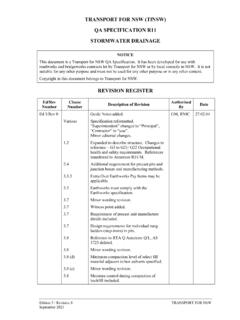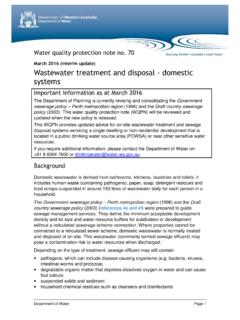Transcription of Pedestrian Refuges - Roads and Waterways
1 Distribution List: Director, Infrastructure Services; Director, Commercial Services; Director, NSW Centre for Road Safety; Traffic Management and Road Safety staff; and Traffic Signal design staff. For further enquiries I E Amendment: Usage of TD clarified. Minor corrections made to Figures 2 & 4 Approved: R W O Keefe Mgr Traffic Policies, Guidelines & Legislation / June 2011 RTA/Pub. 1 (7 pages) UNCONTROLLED WHEN PRINTED Pedestrian Refuges (Supplement for narrowing or widening of Roads at Pedestrian Refuges ) BACKGROUND The provision of safe and effective Pedestrian facilities is an integral component of the RTA s commitment to facilitating and encouraging people to walk as a healthy alternative to using cars, especially for short trips.
2 This Technical Direction deals with Pedestrian refuge design that incorporates options for road widening or road narrowing (kerb extension) at refuge islands as appropriate and can be applied consistently to a variety of road cross sections across NSW. Separate Pedestrian refuge designs have been prepared for two lane two-way and four lane two-way Roads . Details of Pedestrian Refuges not requiring road widening or road narrowing can be found in Australian Standard AS1742 and the relevant RTA Supplement. OBJECTIVES The objectives of this Technical Direction are: To provide clear guidance for the design of Pedestrian Refuges with road widening or road narrowing (kerb extension) throughout NSW; and To improve consistency in the design and appearance of Pedestrian Refuges throughout NSW SCOPE This Technical Direction applies to the design and construction of all new Pedestrian Refuges throughout NSW requiring road widening or road narrowing (kerb extension).
3 Technical direction For traffic and transport practitioners POLICY GUIDELINES - ADVICE Published JUNE 2011 Supersedes/Amends TDT 2011/01 TDT 2011/ 01a Pedestrian Refuges | June 2011 2 (7 pages) UNCONTROLLED WHEN PRINTED PRACTICE All new Pedestrian Refuges should be designed and constructed in accordance with the following practice as stated Pedestrian Refuges with no road widening or road narrowing use RTA supplement for Australia Standards 1742 Manual for Uniform Traffic Control Devices (Part 10), RTA supplement for Austroads Guide to Traffic Management (Part 6) and RTA supplement for Austroads Guide to Road Design (Part 4) Pedestrian Refuges with road widening or road narrowing (kerb extension).
4 Figure 1, 2 3 & 4 illustrate options to accommodate the Pedestrian refuge as appropriate and Figure 5 illustrates the Island Detail. It is recommended that kerb extensions be used to narrow the road at the Pedestrian refuge island, whenever possible. The use of kerb extensions reduces the length of crossing for pedestrians, generating increased crossing opportunities and facilitates a reduction in the length of No Stopping zone required. Kerb ramps are to be constructed in accordance with the RTA s model drawing, Kerb Ramps. The length of No Stopping zone required to maintain adequate sight distance and swept path through the refuge island may be reduced if kerb extensions and incorporated in conjunction with the Pedestrian refuge, see No Stopping Signs Table in Figure 1, 2, 3 & 4.
5 To maintain consistency throughout NSW, all sign posting and line marking at Pedestrian Refuges with road widening or road narrowing (kerb extension) must be installed strictly in accordance with this Technical Direction. ACTION This Technical Direction is to be adopted and applied as the standard design for Pedestrian Refuges with road widening or narrowing (kerb extension) across NSW. UPDATES To ensure that this Technical Direction and any related guidelines remain current and relevant, minor updates may be made from time to time. Any updates may be obtained from the RTA website using the Traffic & Transport Policies & Guidelines Register which can be found at: Printed copies of this Technical Direction are uncontrolled, therefore the Register should always be checked prior to using this Technical Direction or any related guidelines.
6 Approved by: SIGNED Craig J Moran General Manager Traffic Management Authorised by: SIGNED John Statton A/Director Network Services Pedestrian Refuges | June 2011 3 (7 pages) UNCONTROLLED WHEN PRINTED Figure 1 Pedestrian Refuges | June 2011 4 (7 pages) UNCONTROLLED WHEN PRINTED Figure 2 Pedestrian Refuges | June 2011 5 (7 pages) UNCONTROLLED WHEN PRINTED Figure 3 Pedestrian Refuges | June 2011 6 (7 pages) UNCONTROLLED WHEN PRINTED Figure 4 Pedestrian Refuges | June 2011 7 (7 pages) UNCONTROLLED WHEN PRINTED Figure 5
